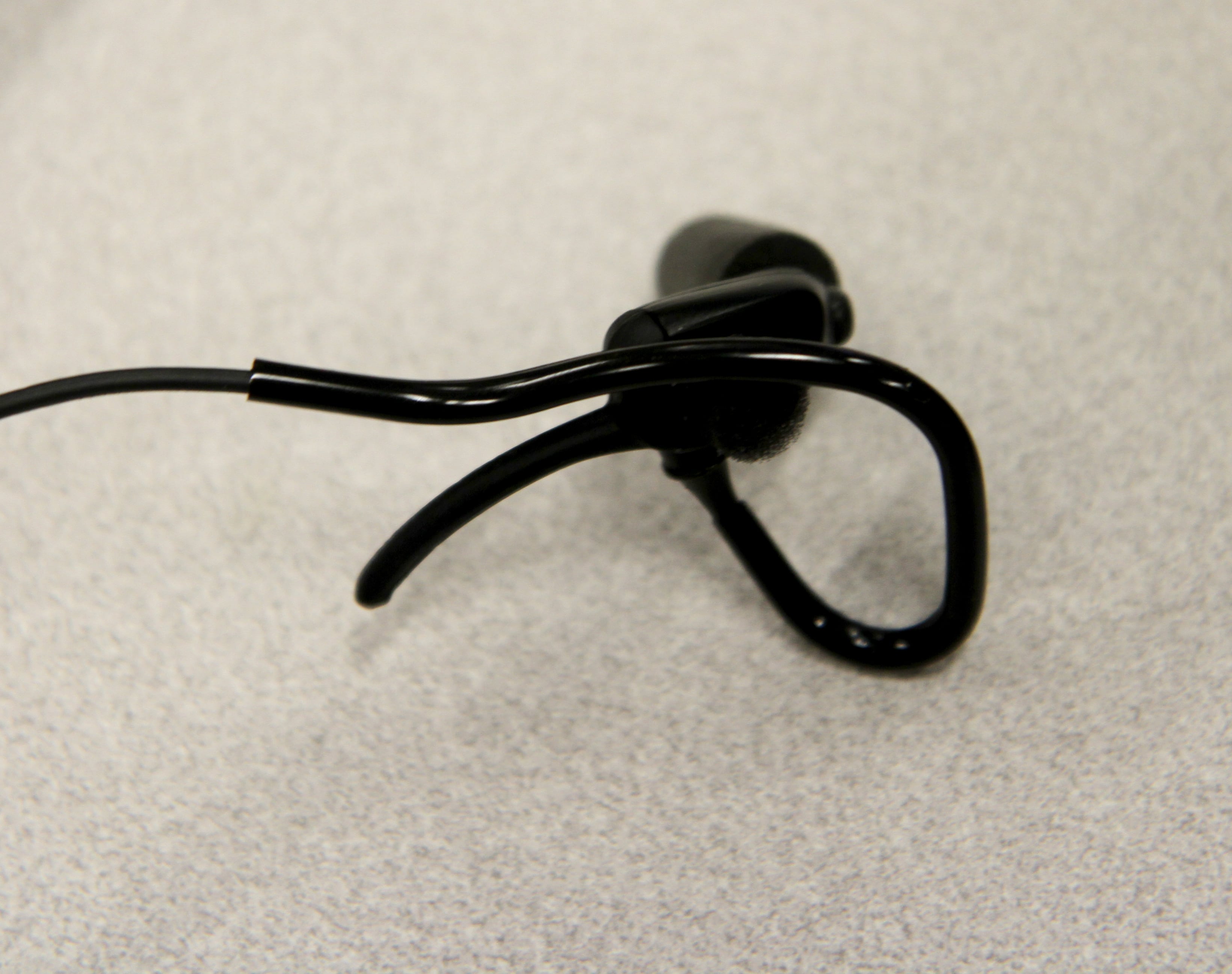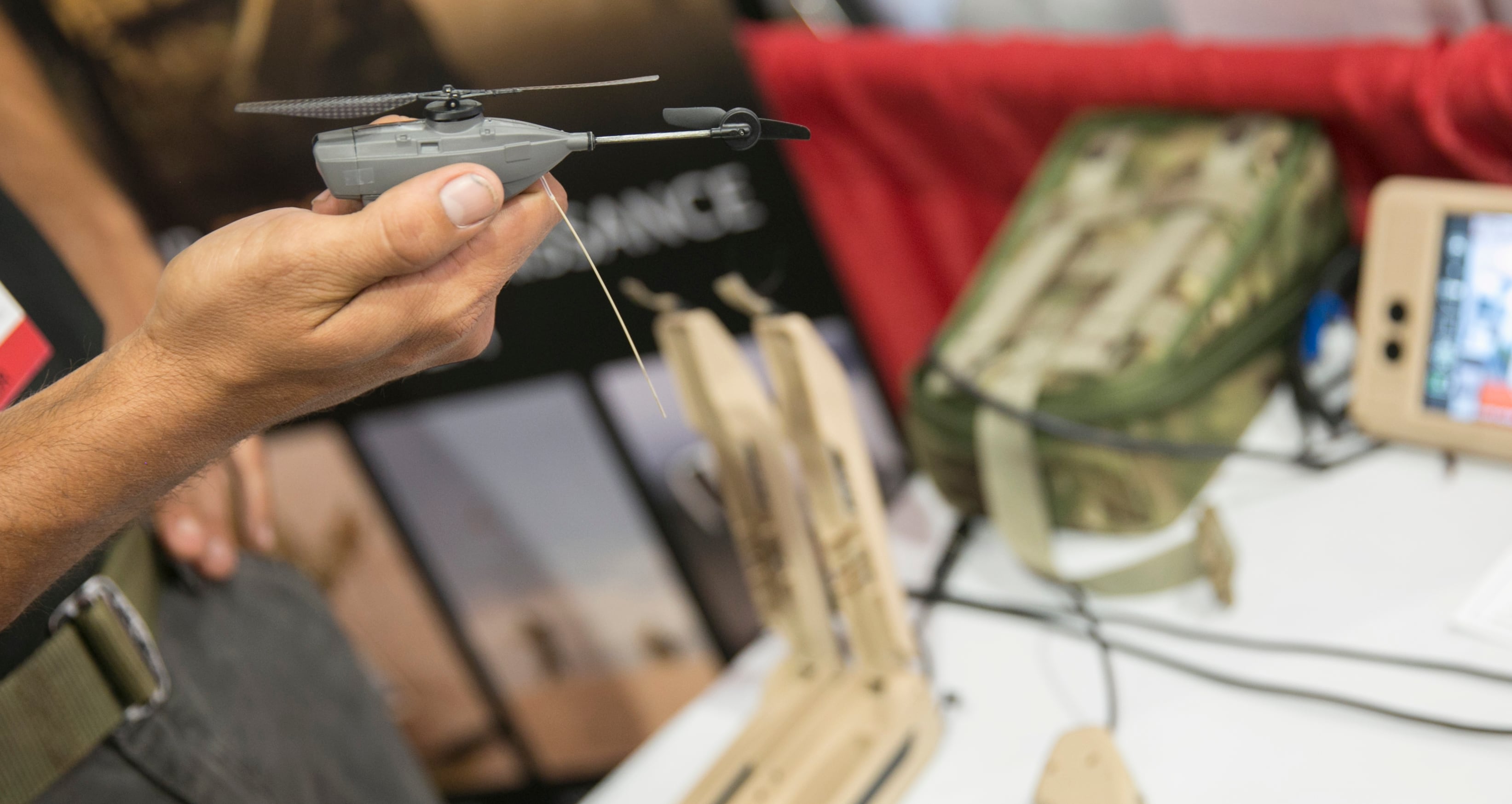The biggest news out of Program Executive Office Soldier in the past year was the roll out of the improve Army Combat Uniform, featuring a more effective camo pattern — and less Velcro.
But that is just one in a portfolio of literally hundreds of pieces of personal equipment intended to enhance the warfighter in combat.
Brig. Gen. Brian Cummings, PEO Soldier's chief for just over a year, said he's always looking to add more tools to a soldier's toolkit.
Cummings sat down with Army Times on Sept. 29 to discuss some of the big-ticket items in PEO Soldier's universe to keep an eye on in the coming year.
Next steps for uniforms
On Nov. 1, Army begins its last of three phases of rolling out the new Army Combat Uniform. Cummings said the next big step is fielding all the organizational clothing and individual equipment that incorporates the new Operational Camouflage Pattern.
"I think the questions that I'll get next summer won't be on people wearing the uniform. It'll be our transition ... with the OCIE, all the other associated equipment and the new pattern — about getting it quicker and sooner. We're doing the best we can with that one," Cummings said.
Anyone deploying will have matching OCIE, Cummings said, but in garrison the mix will persist as long as there's useful gear in the old digital-gray Universal Camouflage Pattern.
As for the uniforms themselves: While soldiers can wear the grayish Universal Camouflage Pattern until 2019, Cummings has been surprised at how quickly soldiers have rushed to stores to buy the new camo. He acknowledged that UCP could effectively disappear sooner than mandated; the green Class A service uniforms, for example, were nearly impossible to find well before their wear-out date of Oct. 1, 2015.
"It's very well-liked. Soldiers, as you can see, are buying it," Cummings said. "I would have thought a lot more would have been waiting for a certain period for their clothing allowance or something else before they bought it."
So far, the Army has sold about $15.6 million worth of gear for the new uniforms; that's more than 667,000 ACU coats, ACU trousers, patrol caps, T-shirts and belts.
The OCP ACUs replaced the unpopular and often-mocked UCPs with an objectively more effective color combination. Cummings said the ACU's new fold-down collar design, zipper and button replacements for Velcro, modified elbow and knee pads, and removed trouser waistband drawstring have received positive feedback from soldiers.
Senior Army leadership is still considering whether or not to produce a lighter-colored desert variant and a more verdant jungle iteration of OCP, Cummings said, calling them "bookends" on either side of the OCP mix of browns and greens meant to work well in most settings.
"We do have cost figures on how much it would take," Cummings said. "The question is ... – we know how much it would cost to buy the uniform and the OCIE minus the price breaks of how much of it you would have to get and how much you’d want to have in stock. would you want three brigades, six brigades, nine brigades, and then what would you do with it?"
Reloading on a new pistol
On Aug. 28, the Army formally requested solicitations for a new handgun. Now gun-makers are preparing their bids to replace the Beretta M9 — the Army's pistol of choice since 1985 — with a new Modular Handgun System, dubbed XM17. PEO Soldier expects the guns to reach the first units in early 2017.

The Army is looking to replace the M9, which has been the service's pistol since 1985.
Photo Credit: Timothy Hale/Army
Cummings said that with maintenance and part replacement of the current handgun, "it made sense to go ahead and go out there and get the latest and greatest."
The modular element is key, as the program's name indicates. The Army wants a gun that can be adjusted with different-sized grips, as well as accommodate a variety of accessories, such as laser sights and flashlights. The competition will be open-caliber, which opens the door for .40- and .45 -caliber bullets, along with the smaller current Army and NATO standard 9mm. Hollow tip and fragmenting bullets are possible; the U.S. has never signed onto the 1899 Hague Convention that bars them.
Each company can submit two weapon systems if they are different calibers, which will be evaluated through scientific testing as well as combat simulation feedback from soldiers. Until the Jan. 28 deadline, the Army will remain in a holding pattern as it awaits submissions for the contract, which maxes out at about $580 million.
Welcome to the jungle?
While the Army's "Pacific pivot" is well underway, PEO Soldier continues to wrestle with jungle gear tests.
PEO Soldier has taken particular interest in developing a new combat boot designed for jungle warfare. The Jungle Boot Soldier Enhancement Program initiative surrounding the jungle boot "yielded many salient characteristics, which the Army will implement into material evaluations set to take place in 2016," according to PEO soldier.
Those materials will offer a lighter-weight option with an emphasis on water displacement, faster drying times, ankle roll-stop protection and a tread designed for mud.
PEO Soldier also is studying textiles for jungle uniforms, with focus on breathability, comfort and durability.
The Army is also looking at a potential upgrade to the machete. In particular, the Army seeks a machete that is shorter and easier to pack. It would include a double-edged blade with a fine edge for brush and a rough saw for branches, limbs and small trees.
Ear protection
Soldiering is hell on the ears, without the proper protection. That's why Cummings cited the Tactical Communication and Protective System as one of the most important equipment upgrades soldiers will receive into next year.
"We have a lot of soldiers that are labeled as non-deployable for hearing," Cummings said, noting that more than $1 billion in Veterans Administration compensation per year is spent to treat hearing loss for 800,000 veterans.

The new Tactical Communications and Protective Equipment being issued to soldiers is designed to provide active hearing protection while allowing them to maintain situational awareness on the battlefield.
Photo Credit: Sgt. Jon Heinrich/Army
There are two versions: TCAPS Radio (which compliements a soldier’s radio and hasve seen limited fielding to dismounted troops) and TCAPS Lite (for soldiers without a radio; this has have not gotten to soldiers yet). PEO Ssoldier said they can cut a 150 decibel weapon firing to 85 decibels. But crucially, they do not limit a soldier’s ability to hear quieter sounds; in fact they enhance it. Soldiers firing their weapon can more easily hear commands from leaders (such as "cease fire") and can generally pick up sounds better.
The ear buds fit in a USB-powered carrying case, and are easy to put on and turn on. Cummings said the Army is buying a limited procurement, and more will be bought "as the money becomes available." Priority for TCAPS Lite will go to light infantry soldiers.
Black Hornet
The PD-100 Black Hornet is a toy-sized UAV that makes short-distance reconnaissance easy. The four-inch, 18-gram personal scout can fly for about 25 minutes, maxing out at about 11 miles per hour while taking video and high-resolution images. A small, hand-held terminal receives the feed and controls the bird.
Cummings said it was one of the items that could come down the pipe next year that could have a big impact, though he didn't have a specific timetable.

A Prox Dynamics employee shows off their nano-UAV, the PD-100 Black Hornet.
Photo Credit: Mike Morones/Staff
This small, virtually silent mini-scout gives instant squad-level reconnaissance, whether over a hill, around a street corner or in different rooms in a building, all while keeping the soldier out of harm's way. The United Kingdom first used the device in Afghanistan in 2012, and the Norwegian manufacturer, Prox Dynamics, has supplied the U.K. and Norway with hundreds.
The Army Expeditionary Warrior Experiments tested out the Hornet in the spring to positive reviews from soldiers, and the results were discussed at the Maneuver Conference in September. Cummings said the Maneuver Center of Excellence was working on requirements documents to determine the Army's specific needs.
Enhanced Night Vision Goggle
The Army has begun rolling out the next version of the Enhanced Night Vision Goggle — but PEO Soldier plans to go a big step further as it works to enhance soldiers' situational awareness.
ENVG-III, like predecessors that stretch back to limited fielding in 2009, offers soldiers thermal imaging along with simple night vision.That means anything alive will light up yellow on the traditional, green night-vision background, only now with a widened 40-degree field of view for the thermal imaging. While ENVG-III will begin to roll out to soldiers this quarter, the real "leap-ahead capability" of Family of Weapon Sights-Individual will come a few years later, in 2019.
FWS-I wirelessly links an infrared rifle sight to the ENVG-III so that the goggle can see (and show the soldier) what the rifle sees. In one setting, a soldier looking at the newly widened 40-degree angle field of view allowed by the goggle will — at the same time — see the rifle's sight overlaid onto the image. In other words, a soldier can clearly see what the rifle is aiming at without raising it to his eye. The other two settings: see only what the rifle sees in the goggle, and a picture-in-picture showing the two images separately on the screen.




